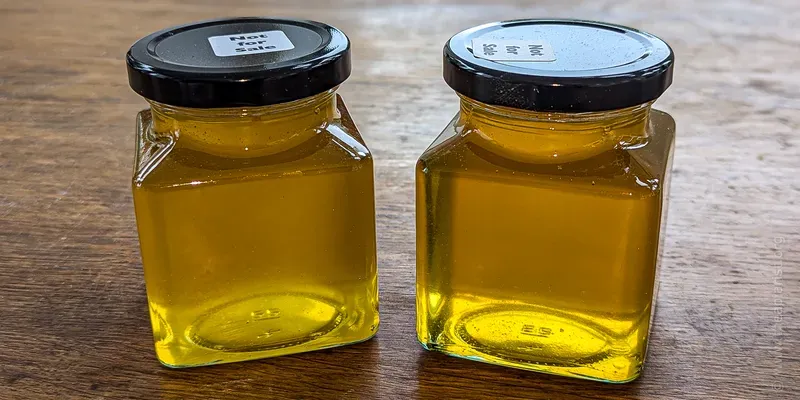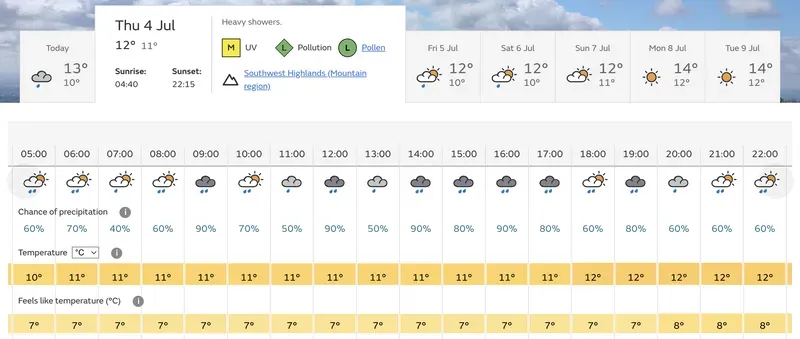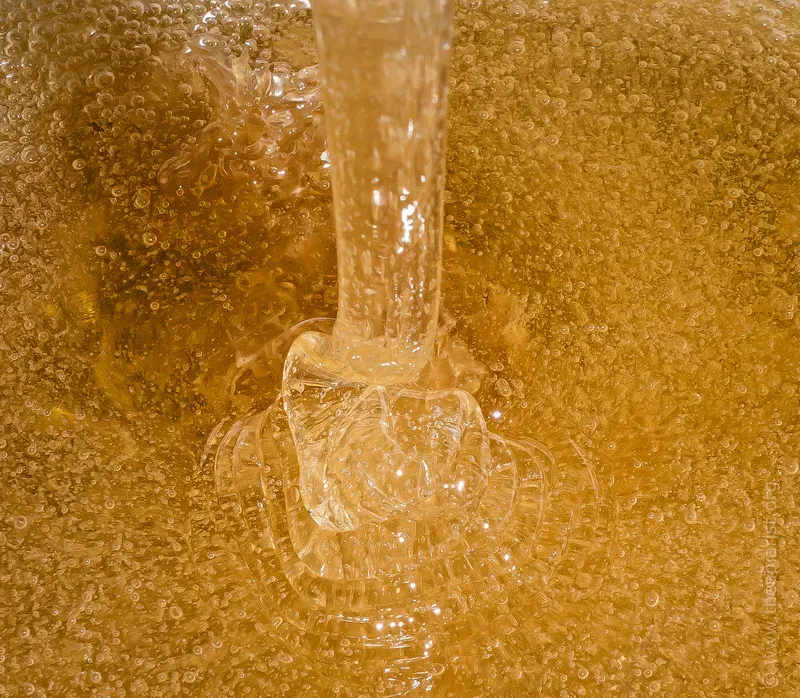Raw honey

High summer.
Hot, sunny days, filled with the soothing hum of foragers returning to the hive, and of drones loudly leaving in search of love.
Apiary visits are memorable for the sweat-filled gloves, the aching fingers from handling packed brood frames, and the lower back 'twinges' after adding supers to the growing stacks.
Not so much 'making hay while the sun shines' as 'making honey while the sun shines'.
Or perhaps not.

This is Scotland ... it feels like the Faroe Islands ... in November.
The headline temperature (12°C as I write this) is bad enough, but look at the 'feels like' temperature.
I've been researching temperature and foraging activity for a future post, and 7°C is more typically associated with 'cleansing flights'. Even if the bees were stupid enough to fly, the temperature-dependence of nectar production (Plos et al., 2023) would ensure there was precious-little for them to collect {{1}}.
These consistently low temperatures have delayed swarming - more on that next week - and stopped almost all queen mating (at least in my part of the world). Some of the queens that have got mated are already being superseded, presumably because they were only poorly mated.
Frustrating.
But, despite all this weather-related woe, honey has been produced 😃.
My spring honey crop was well down on last year, but probably about average overall. I was pleasantly surprised considering the conditions.

Harvesting the honey was the usual noisy, sticky, tedious, repetitive process, made just that little bit easier by pre-warming the supers for a few days at 37°C and a bangin' soundtrack of 1970s disco 'floor fillas'.
Raw honey, or is it?
Some might consider the 1970s disco a crime, but - depending on how I label my honey - those pre-warmed supers and subsequent processing, could be the thing that gets me into trouble ... with Trading Standards.
Or could it?
A recent court case has highlighted the vagueness, ambiguity and unsuitability of the UK's honey (labelling) regulations.
It should be of interest to all beekeepers who produce honey for sale, and is also notable as being one of the few rulings by a judge that starts with a quote from Winnie the Pooh.
In light of the ruling on the definition of the term 'raw' honey - as that was what the court case was about - I went back and re-read some of the regulations. In some cases they are clear and unambiguous, but in many places they are not.
What is 'raw' honey?
Can I label my honey with the word 'raw', or does any manipulation of honey - from the hive to the shop shelf - count as processing?
And, if so, how much processing (and of what type) could be allowed without falling foul of the honey regulations?
In which case, could I then use the label 'raw honey'?